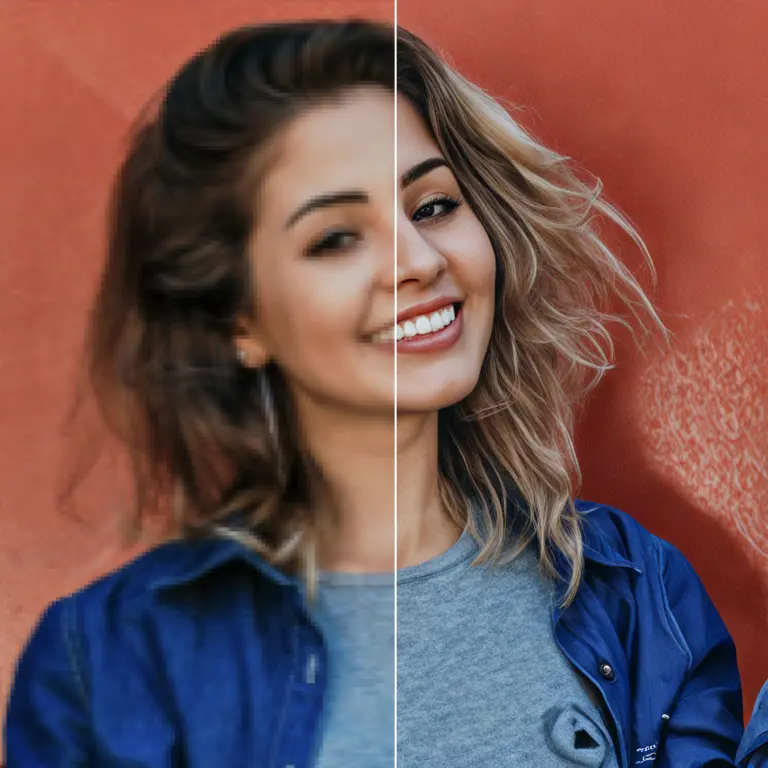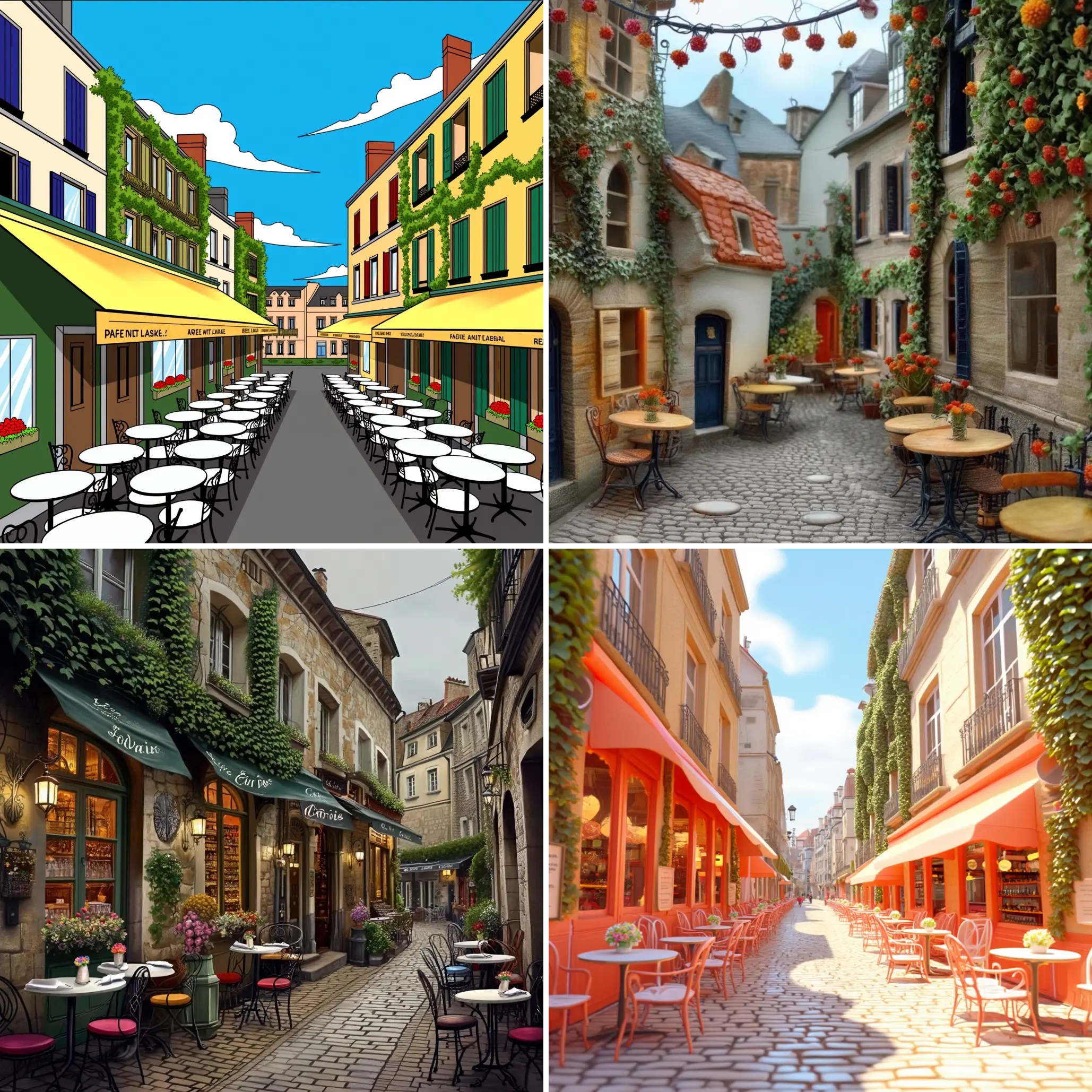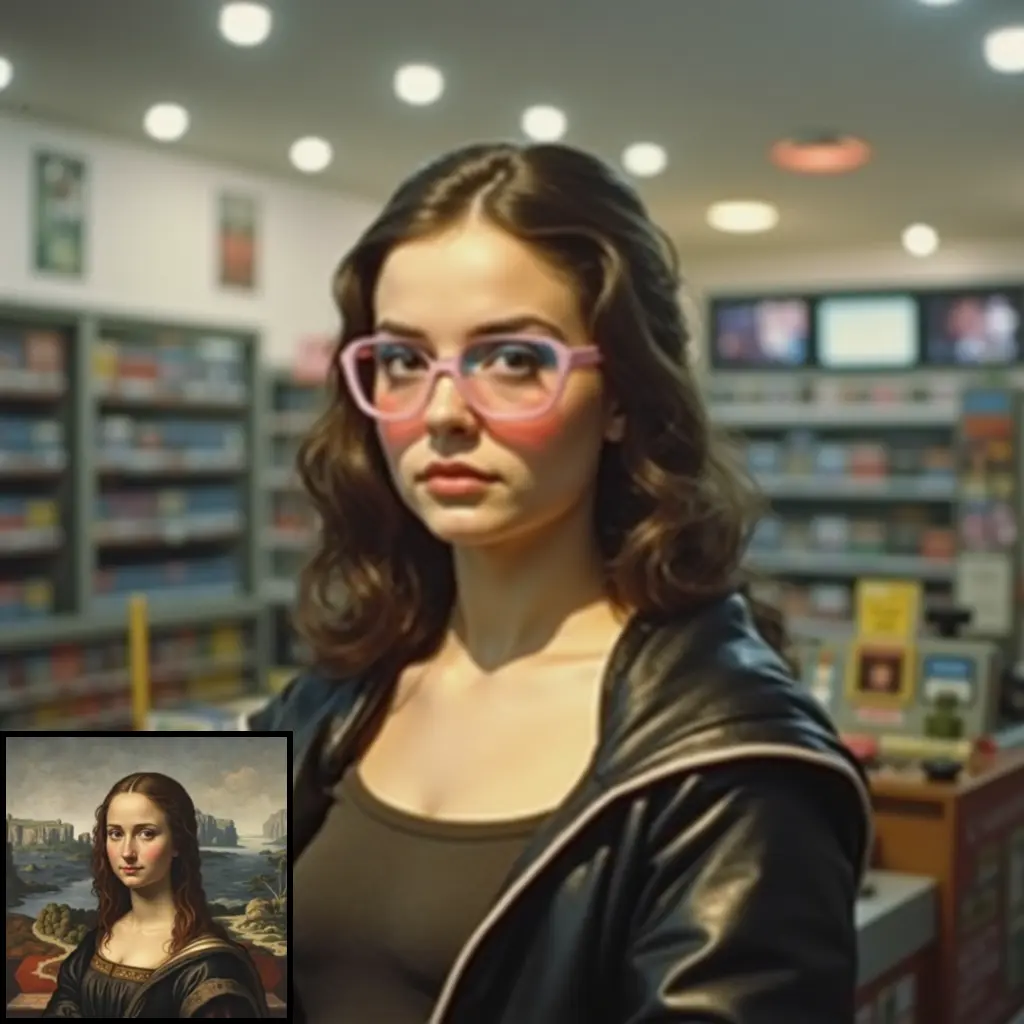ComfyUI Node: Cross-Hatch Power Fractal (PPF Noise)
Cross-Hatch Power Fractal (PPF Noise)
Categorylatent/noise
WASasquatch (Account age: 4910days) Extension
PPF_Noise_ComfyUI Latest Updated
2024-06-14 Github Stars
0.02K
How to Install PPF_Noise_ComfyUI
Install this extension via the ComfyUI Manager by searching for PPF_Noise_ComfyUI- 1. Click the Manager button in the main menu
- 2. Select Custom Nodes Manager button
- 3. Enter PPF_Noise_ComfyUI in the search bar
Visit ComfyUI Online for ready-to-use ComfyUI environment
- Free trial available
- 16GB VRAM to 80GB VRAM GPU machines
- 400+ preloaded models/nodes
- Freedom to upload custom models/nodes
- 200+ ready-to-run workflows
- 100% private workspace with up to 200GB storage
- Dedicated Support
Cross-Hatch Power Fractal (PPF Noise) Description
Generate intricate cross-hatch noise patterns for artistic textures and backgrounds with customizable features for dynamic visual effects.
Cross-Hatch Power Fractal (PPF Noise):
The Cross-Hatch Power Fractal (PPF Noise) node is designed to generate intricate and visually appealing noise patterns that mimic the cross-hatching technique often used in art and design. This node is particularly useful for creating textures and backgrounds that require a hand-drawn or sketch-like appearance. By leveraging the power of fractal noise, it produces complex patterns that can be customized in terms of frequency, color, and angle, allowing for a wide range of artistic effects. The node's primary goal is to provide artists with a tool that can generate unique and dynamic textures, enhancing the visual depth and interest of their projects. Its ability to output both latent and image data makes it versatile for various applications, from digital art creation to procedural texture generation.
Cross-Hatch Power Fractal (PPF Noise) Input Parameters:
batch_size
This parameter determines the number of noise patterns to generate in a single batch. A higher batch size can be useful for creating multiple variations of the noise pattern simultaneously, which can be beneficial for experimentation or when working with large datasets. The default value is typically set to 1, but it can be adjusted based on the user's needs.
width
The width parameter specifies the horizontal dimension of the generated noise pattern. It directly affects the resolution and aspect ratio of the output, with larger values resulting in higher resolution images. The default value is often set to a standard size, such as 512 pixels, but can be customized to fit specific project requirements.
height
Similar to the width parameter, the height determines the vertical dimension of the noise pattern. Adjusting this value will change the resolution and aspect ratio of the output. The default value is usually set to match the width, creating a square image, but can be modified for different aspect ratios.
resampling
This parameter controls the method used to resize the noise pattern when generating the latent output. Common resampling methods include nearest-neighbor, bilinear, and bicubic, each offering different trade-offs between speed and quality. The choice of resampling method can impact the smoothness and detail of the final output.
frequency
Frequency defines the scale of the noise pattern, with higher values resulting in more detailed and intricate patterns. It is a crucial parameter for controlling the overall appearance of the noise, allowing artists to fine-tune the level of detail in their textures. The default value is typically set to 320, but can be adjusted for different artistic effects.
octaves
This parameter determines the number of layers of noise that are combined to create the final pattern. More octaves result in more complex and detailed patterns, but can also increase computational cost. The default value is often set to 12, providing a good balance between detail and performance.
persistence
Persistence controls the amplitude of each successive octave, affecting the contrast and intensity of the noise pattern. Higher persistence values result in more pronounced patterns, while lower values create softer, more subtle effects. The default value is usually set to 1.5.
color_tolerance
Color tolerance defines the sensitivity of the node to color variations, impacting the number of distinct colors in the output. Lower values result in more uniform patterns, while higher values allow for greater color diversity. The default value is typically set to 0.05.
num_colors
This parameter specifies the number of colors used in the noise pattern, influencing its visual complexity and richness. A higher number of colors can create more vibrant and detailed patterns, while fewer colors result in simpler, more uniform textures. The default value is often set to 16.
angle_degrees
Angle degrees determine the orientation of the cross-hatch lines in the pattern. By adjusting this parameter, artists can create patterns with different directional emphasis, adding variety and interest to their textures. The default value is usually set to 45 degrees.
brightness
Brightness adjusts the overall lightness of the noise pattern, allowing artists to create lighter or darker textures as needed. This parameter can be used to enhance the visibility of the pattern or to match the lighting conditions of a specific project. The default value is typically set to 0.0.
contrast
Contrast controls the difference between the lightest and darkest areas of the noise pattern, affecting its visual impact and clarity. Higher contrast values create more striking patterns, while lower values result in softer, more muted effects. The default value is usually set to 0.0.
blur
The blur parameter applies a smoothing effect to the noise pattern, reducing sharp edges and creating a softer appearance. This can be useful for creating more natural-looking textures or for blending the pattern with other elements in a composition. The default value is often set to 2.
clamp_min
Clamp min sets the minimum value for the noise pattern, effectively controlling the darkest areas of the output. This parameter can be used to prevent the pattern from becoming too dark or to ensure a certain level of detail is maintained. The default value is typically set to 0.0.
clamp_max
Clamp max sets the maximum value for the noise pattern, controlling the brightest areas of the output. This parameter can be used to prevent the pattern from becoming too bright or to maintain a certain level of contrast. The default value is usually set to 1.0.
seed
The seed parameter initializes the random number generator used to create the noise pattern, ensuring reproducibility of results. By using the same seed value, artists can generate identical patterns across different sessions or projects. The default value is often set to a random number.
device
This parameter specifies the computational device used to generate the noise pattern, such as a CPU or GPU. Choosing the appropriate device can impact the speed and efficiency of the node, with GPUs typically offering faster performance for large or complex patterns.
optional_vae
The optional VAE (Variational Autoencoder) parameter allows for the encoding of the noise pattern into a latent space, enabling further manipulation or integration with other machine learning models. This parameter is optional and can be omitted if not needed for a specific project.
Cross-Hatch Power Fractal (PPF Noise) Output Parameters:
latents
The latents output provides a representation of the noise pattern in a compressed form, suitable for use in machine learning models or for further processing. This output is particularly useful for artists working with generative models or for those who wish to manipulate the noise pattern in a latent space.
previews
The previews output offers a visual representation of the generated noise pattern, allowing artists to quickly assess the appearance and quality of the texture. This output is essential for evaluating the effectiveness of the chosen parameters and for making adjustments as needed to achieve the desired artistic effect.
Cross-Hatch Power Fractal (PPF Noise) Usage Tips:
- Experiment with different frequency and octaves settings to achieve a balance between detail and performance, especially when working with high-resolution textures.
- Use the angle_degrees parameter to create directional emphasis in your patterns, adding variety and interest to your textures.
- Adjust the color_tolerance and num_colors parameters to control the color diversity in your patterns, creating either vibrant or more uniform textures.
Cross-Hatch Power Fractal (PPF Noise) Common Errors and Solutions:
"CUDA out of memory"
- Explanation: This error occurs when the GPU does not have enough memory to process the current batch size or resolution.
- Solution: Reduce the batch size or resolution, or switch to a device with more memory.
"Invalid device specified"
- Explanation: The specified device is not available or incorrectly configured.
- Solution: Ensure that the correct device is specified and that it is properly configured for use.
"Seed value must be an integer"
- Explanation: The seed parameter requires an integer value to initialize the random number generator.
- Solution: Ensure that the seed value is an integer, and adjust it if necessary.
Cross-Hatch Power Fractal (PPF Noise) Related Nodes
- Description
- Cross-Hatch Power Fractal (PPF Noise):
- Cross-Hatch Power Fractal (PPF Noise) Input Parameters:
- Cross-Hatch Power Fractal (PPF Noise) Output Parameters:
- Cross-Hatch Power Fractal (PPF Noise) Usage Tips:
- Cross-Hatch Power Fractal (PPF Noise) Common Errors and Solutions:
- Related Nodes
RunComfy is the premier ComfyUI platform, offering ComfyUI online environment and services, along with ComfyUI workflows featuring stunning visuals. RunComfy also provides AI Playground, enabling artists to harness the latest AI tools to create incredible art.



